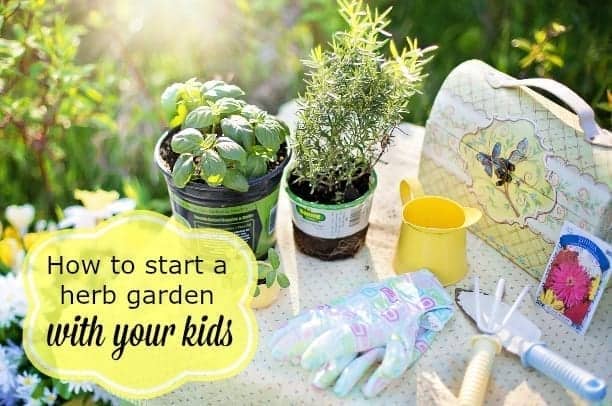
Herbs can be one of the easiest things for your little budding gardener to grow and a few simple steps can get your kids started with their very own herb garden.
Materials
-
- A raised bed approximately 3-foot square or a garden bed 3 ft square or window boxes, containers etc
-
- Topsoil, soil mix & grit.
-
- Stakes for tall plants.
-
- Watering can.
- Trowel
Choose a location
While it is nice to have your herb garden just outside the kitchen, ideally, you should have your herb garden in a spot where it gets some sun and some shade throughout the day – this will give you the best conditions to grow a wide variety of herbs. If you do not have a raised bed or a large area to plant a herb garden, you can use containers, window boxes, even gaps between paving stones – there’s no rule that says they should all be in a square bed.
Prep the soil
Place a layer of grit in the bottom of the bed approximately 3 inches deep. Cover this with 6 inches of soil mix and fill to the top with topsoil. If you are digging a bed in the garden, dig down approximately 12 inches and turn the soil thoroughly, making sure it is weed free. If you use containers place a little grit or some small stones in the bottom for drainage and fill with soil mix.
Decide what to plant
Your first choice of herbs should be ones you are likely to use. Plant herb staples such as sage & thyme but throw in some more unusual herbs such as lovage and fennel or edible blooms such as star flowers. Purchase a mixture of annual & perennial herbs and start your planting in mid-spring, after the last frost. Sowing and planting out times are as follows:
Mid spring
-
- Rosemary – perennial
-
- Lovage – Tall perennial
-
- Sweet cicely – perennial
-
- Bronze Fennel – perennial
-
- Thyme – perennial
- Purple Sage – Evergreen shrub
Late spring
-
- Cilantro – annual
-
- Starflower – annual
- Purple basil – annual
As you get to the end of the summer you can plant mustard greens and arugula in the gaps left by the annuals. In the late fall plant garlic cloves which can be picked as leafy spikes in the spring and then as bulbs in the summer.
Planting
Ease your herb plants gently from the pots you have bought them in. Dig a hole so that the plant will sit no deeper than it was in its original container. To help them get established, gently loosen their root balls before planting. Take care to plant the herbs that will grow tall at the back of the bed and space the herbs about 3 inches from the next one to ensure enough growing space.
General herb care
-
- Trim your herbs on a regular basis if you don’t trim them to use in the kitchen. This will prevent them from flowering too early.
-
- Remove dead or fading leaves to encourage new foliage.
-
- Keep the bed free of weeds to ensure your herbs have no competition for food, water, and the sun.
-
- Check for pests such as slugs and snails regularly.
-
- Keep the herbs well watered.
- Provide support for tall growing herbs.
Follow these simple steps and you will have a flourishing herb garden and be enjoying the taste of fresh herbs in no time.





